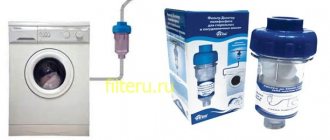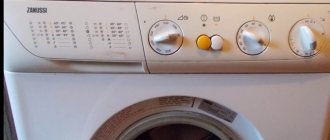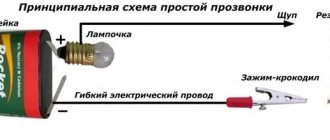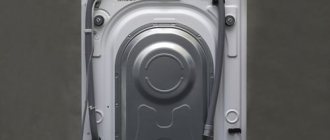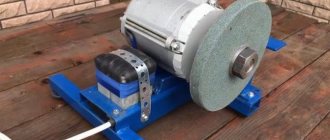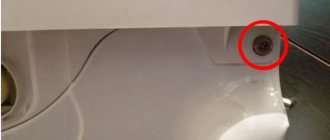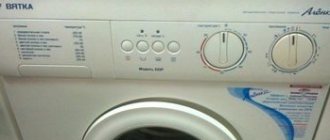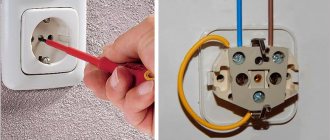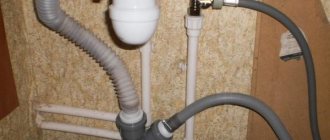What kind of sockets should there be for a washing machine? This is a very relevant question, and the location of the washing machine itself can be anywhere. For an apartment, this is mostly a bathroom and a smaller kitchen. Let's look at both of these most common installation options.
For a private house, cottage or estate, such a household appliance can also be located in a heated utility room, in the basement and some other places where there is a simplified possibility of connecting to communications. Let us consider with you the general case of the location of the outlet for the washing machine, namely in the bathroom and in the kitchen.
Sconce functions
It is necessary to select a lamp depending on the following functions:
- Local lighting. To provide local lighting, sconces are used as an addition to the main source. Typically, lamps are mounted for reading books and lighting interior items. You can also choose two identical devices, which are placed above the bed at the same distance.
- Creating a certain atmosphere. Lamps can give a solemn look and create an intimate atmosphere. In this case, the sconce must be chosen to match the style of the chandelier. Usually they buy lamps from the same collection.
- Main source of lighting. In small rooms, a chandelier can look bulky, so it is advisable to choose a wall sconce. It will be the main and only light source.
- Decorative element. Sometimes the main function of a sconce is considered to be decoration of a room. Then it should be matched to the style of the room or used as a bright accessory.
- Zoning. The use of such lamps allows you to divide the space into areas for relaxation, work or reading books.
When choosing a sconce, you must also take into account the number of lamps. If a wall lamp will be the only source of lighting, then it is better to choose a multi-arm chandelier. Lamps with one shade are used for small rooms or used with other devices - sconces, lamps, floor lamps, spots.
Summary
So, let’s summarize how to install sockets and switches so that they are convenient to use. Regardless of the choice of installation location and height, be sure to draw up a diagram. It will help to carry out all the preliminary work with high precision, and in particular, wall slitting.
So, the diagram should indicate:
- door and window openings;
- location of electrical wires on the walls;
- distribution box installation locations;
- the presence of one or another household appliance;
- arrangement of furniture.
Take care of the safety of children
If you have accurate data, there will be a very small chance that you will make a mistake while working.
If you know about other subtleties of installing an outlet, then write comments at the end of this article. We hope that the information provided will help you carry out the work correctly.
In the kitchen
There are requirements of PUE-7 that are relevant for this premises.
When installing electrical points, the minimum distance should be:
- from switches and sockets to the gas pipeline: 0.5 m;
- to the sink and water supply: 0.6 m.
This exhausts the requirements of regulatory documents regarding the kitchen. But there are other rules dictated by life experience and common sense.
The kitchen is divided vertically into three zones, this is due to two factors:
- there is a lot of furniture blocking access to the lower part of the walls;
- There are many electrical appliances installed: for ease of use they need to be separated.
These vertical zones are:
- lower: 10-15 cm above the floor. Sockets are installed here for constantly operating appliances - a refrigerator, an electric stove, a dishwasher. With this connection, the risk of getting caught on the wire is minimal, since almost all of it lies on the floor;
- average: 1-1.3 m above the floor. Install light switches and sockets for appliances standing on the tables - blender, coffee maker, toaster, electric meat grinder, etc. The indicated height is conditional. It depends on the height of tables and work surfaces: sockets and switches should be slightly higher;
- top: 2.0-2.5 m above the floor. Sockets are installed here to illuminate the work area, air conditioner, hood, etc. This placement is convenient for two reasons: you can use models with a short wire, and the sockets are hidden by furniture and therefore do not spoil the interior.
Built-in socket blocks mounted in a countertop or cabinet are very convenient. The unit connects to an outlet on the wall (in the lower zone) and works similar to an extension cord with several outlet sockets. When not needed, it slides under the countertop or into a cabinet, so that only the elegant lid remains on the surface.
Connection from one cable of the hob and oven
What to do if there is neither the opportunity nor the desire to connect the oven with a separate cable from the panel board, but you still have wiring from an old electric stove in your kitchen or there is already a previously laid wire to connect the hob. Is it possible to power the oven from it?
It is possible, but here again certain rules must be followed:
The electric oven must have a separate circuit breaker
The power cable from the panel must be designed for the load of simultaneous connection of both the oven and the hob
Roughly speaking, the circuit breaker in the switchboard should be selected not according to the load of the devices, but according to the actual cross-section of the existing cable!
Here is the cable and differential circuit breaker you should have in your control room to simultaneously connect the oven and hob (the table shows their total power):
Remember that you cannot connect both kitchen appliances directly or through a terminal block at the same time if they are protected by one single circuit breaker in the panel.
Also, the option of installing a separate outlet on the oven, by unsoldering it from the terminals in the distribution box or directly from a powerful outlet through which the hob is already connected, does not help.
Installing a double socket, even in the factory version, will also not help in an emergency.
Why can't you do this, you ask? Because if the oven plug and cable are initially designed for a current of up to 16A, then it is not known what will happen if there is an overload with them or with the insides of the oven when you put them on a 25A machine, or even more so on 32A-40A.
The best and optimal option in this case is to place a small box behind the kitchen in which a 16A machine and an outlet are mounted.
Thus, the plug of the connecting wire of the oven can be safely connected to the socket, since it, in turn, is protected by a separate circuit breaker, with a rating lower than the machine in the panel. Here is a diagram of such a connection:
The power cable of the box is connected either by crimping or soldering directly to a powerful cable coming out of the wall. This can also be done through a separate terminal block.
The socket must be modular; it initially fits into such boxes.
This entire assembly (socket + automatic) can be easily connected to a common cable going to the hob. How to assemble and power such a box, watch the video:
PUE requirements and European standard
Previously, switches were installed at a height of 1.5-1.7 m, and sockets - no more than 1 m. Currently, so-called European standards are used, which take into account not only the technical side, but also the features of a given room. In accordance with the standards, switches are located at a distance of 0.8-1.0 m from the floor, and sockets - at 30-40 cm.
Domestic standards are determined primarily by PUE, GOSTs and other documents containing recommendations for installing switches and sockets in a particular room.
- In bathrooms, electrical sources are usually placed at least 60 cm away from taps and shower doors. All products must be waterproof.
- In kitchens, sockets and switches must not be installed above or below the sink. There are separate recommendations for these premises, which will be discussed below.
- In schools and kindergartens, the distance of switches from the floor must be at least 1.8 m, and sockets are used equipped with special protective screens.
- Sockets and switches are installed at a distance of at least 0.5 meters from gas pipes.
All this data is quite conditional, since in real life one has to take into account the arrangement of furniture in the room, the presence of equipment that will be connected, and other factors. During design, all points should be evenly distributed to avoid overloads due to connecting several powerful electrical appliances to one place at once.
Today, the so-called European standard is increasingly used for the installation of sockets and switches. The height of each point here is significantly lower compared to generally accepted standards. For example, the average height of sockets from the floor is defined as 30 cm, and the height of switches is 90 cm. In fact, no special European standards exist, since this definition is nothing more than an integral part of European-quality renovation. This was initially considered to be any repairs made using foreign-made building materials.
Each option has its own pros and cons. For many, installation performed according to old schemes seems convenient. For example, a switch installed at a high height from the floor is always clearly visible. It is not covered by furniture and is completely safe for small children.
The same applies to sockets located at a height of 90 cm. They are more convenient for turning on electrical appliances, since you do not need to bend over each time. However, if some household appliance is constantly connected to the network, then in this case the European standard is more suitable, allowing you to hide not only the outlet, but also the power wires.
What not to do
It is strictly forbidden to use extension cords in bathrooms, especially those of dubious manufacture. Not only are they in no way protected from moisture, most of them do not have a grounding contact, and the cords are made of wire with a small cross-section.
Do not connect the grounding of the outlet to water supply and sewerage pipelines, heating radiators and building fittings.
The bathroom, as mentioned above, is a room with high humidity, where the effect of high voltage electric current is especially strong.
The cost of any mistake in connecting electrical equipment can be quite high, so you need to strictly follow the recommendations and not hope that nothing bad will ever happen.
Source
Where should I place this element?
One of the key points when installing a water outlet is its location. The ideal solution would be a major renovation of the bathroom with a special space allocated for the fitting. Then you can place a new branch in accordance with the existing rules.
- Sufficient distance to the insert. The inlet hose from the washing machine should freely reach the water socket, without complicating connection and operation. If possible, the wiring should be redone in order to move the machine as close as possible to the pipeline.
- The optimal height for the water outlet. Two nuances are taken into account here. Firstly, the height recommended by plumbers is 77 cm from the finished floor. Secondly, the dimensions of the existing washing machine, especially if you plan to install a branch directly behind its body.
- Free access to the valve. This is a safety requirement - in case of problems with water supply, leakage or accident, the owner must quickly and easily reach the tap and turn off the water supply to the machine. You can use shutoff of the general water supply, but it is better to act locally.
- Reliable fastening. To avoid leaks, it is necessary to carefully approach the method of installing the water outlet. Especially if you plan to place it on the wall. In this case, a special type of fitting is selected, and if there are no possibilities, alternative options are sought.
The main thing when choosing a modern insert is to think about convenience. The outlet should not be difficult to install and use and should not be obstructive or inaccessible in an emergency. The aesthetic side of the issue will also be an important point, so do not forget about a beautiful design that matches the interior of the bathroom.
Classification of sockets by design features
The answer to the question of how to choose a water socket for a washing machine has long been found. It is necessary to take into account all their technical characteristics: shape, type, material, but first of all, the method of connection to the highway. Here you need to focus on the configuration of your water supply system, the material of the pipes and the availability of special tools.
Threaded models
As the name suggests, a thread is used to connect these products. This is a time-tested method. Made from high-quality material, this socket is guaranteed to last for many years. A threaded water socket is:
- long service life;
- excellent tightness performance;
- strength and reliability;
- ease of installation.
Installing a threaded water socket does not require any special tools; even a novice craftsman can handle it. An additional plus is that the connection is removable. The socket is easy to disconnect from the pipeline, dismantle, and replace if necessary.
Crimp water sockets
The water supply connection is carried out using the crimping method. The basic part of the product is a collet, a special bushing that ensures the reliability and tightness of the joint. Such models have been used relatively recently, however, they have a number of significant advantages:
- low cost;
- long service life;
- ease of installation;
- wide range of models;
- Possibility of dismantling and reinstallation.
Installing such a water socket is somewhat more complicated than working with its threaded counterpart, but it also does not require special tools.
Self-locking
This type of sockets is characterized by ease of connection. For fixation, various locks are used, which are easy to close, securely hold the pipe, and can be easily separated if necessary. Advantages of such products:
- completely collapsible design;
- possibility of reconnection;
- ease of installation;
- versatility.
After connecting these parts, you must check the reliability of the joint. Carefully inspect for leaks, use a napkin if necessary.
Solder sockets
These water sockets are attached to a plastic pipe using a special soldering iron. The joint is even, smooth and reliable. Advantages of this method:
- minimum of used parts;
- compactness;
- long service life;
- tightness;
- low cost;
- versatility.
This is one of the simplest methods of fastening, but it also has disadvantages. First of all, the connection is permanent; if replacement is necessary, the pipe will have to be cut. In addition, installation will require special equipment.
Kitchen
The main condition for an electrical element installed in the kitchen is that it should not be closer than 0.6 m to the water pipes and sink. The same applies to gas pipes and stoves; it is necessary to maintain a distance between them and sockets (switches) of at least 0.5 m.
About the design of sockets in the kitchen in the video:
In general, the situation with electrical kitchen wiring is the most difficult. Firstly, there are many communications located here - heating, water supply, sewerage, gas. Secondly, there are much more household appliances that require a separate power supply in the kitchen than in any other rooms (washing machine, water heater, hob, electric oven). In this case, you need to install sockets in such a way that they are always accessible.
In kitchens, it is better to install these switching devices at three levels from the floor:
- The first level (or lower) is 0.15-0.20 m. At this level, sockets are installed for electrical appliances that require constant or long-term connection to the network (washing machine, dishwasher, refrigerator, electric stove, waste shredder).
- The second level (or middle) is 1.0-1.2 m. At this height, switches for lighting elements and sockets for household kitchen appliances (microwave oven, tester, blender, food processor, electric kettle, bread maker, coffee machine, multicooker, etc.) are made. P.). Choose a more precise distance yourself depending on the configuration of the furniture in the kitchen.
It is permissible to place sockets under countertops or inside kitchen cabinets. To do this, special holes must be made in the walls of the furniture. This will help you save some space without ruining the overall look.
The minimum distance from the floor to the outlet must be at least 0.1 m, otherwise water may enter it during wet cleaning (washing floors).
Technical requirements for the location of the socket for the washing machine
Household washing machines can be connected to a 220V power supply. However, you should make sure that the product you choose is suitable for use in your apartment or house. Here the technical requirements of the network and socket will be as follows:
rated current up to 16A;
device power up to 3.5 kW.
If this is the case, then an ordinary high-quality socket will do, and the cable cross-section will be sufficient for safe operation of the washing machine. It is important to note that modern washing machines are designed to be connected to a network with a ground loop. There are three wires here: phase, neutral and ground. If you have only two wires in your house (phase and neutral), then grounding should be installed, and if it is impossible to install it, ignore it.
You cannot make a grounding circuit yourself and connect it to the water supply, sewerage or heating pipes. This is a gross violation of security requirements.
The power line with the socket for the washing machine in the bathroom or kitchen must be dedicated. Do not connect other household electrical appliances to such a power point and do not use carriers. The dedicated line itself will be correctly protected using a circuit breaker and an RCD (residual current device). This way you can make connecting the washing machine completely safe.
It is also important to approach the issue of choosing the outlet itself. It must be a reliable and high-quality product, which means you should choose the appropriate manufacturer. Such a manufacturer can be well-known Western brands. However, if you prefer a good domestic manufacturer, then you can give a recommendation for sockets and switches from our Russian company LK Studio.
The quality of sockets from this company is completely similar to the best products from well-known manufacturers, but at the same time they can be bought at our prices. The materials and technologies used in their creation make it possible to operate sockets under conditions close to rated loads without damaging the products.
In the LK60 series of electrical installation products, you can choose a socket with additional climate protection, which will be an excellent solution for the bathroom. However, we will consider this issue a little later.
Rules for the location of electrical points in different rooms
Bathroom power points
Location of sockets in the bathroom
The bathroom is a room with high humidity
Therefore, it is extremely important to know at what height to install sockets and switches so that they do not pose a danger
The main prohibitions are installing power points under the sink, bidet, and bathtub. The sockets must be separated from them by at least 60 cm to prevent accidental ingress of water. It is advisable to make the switch outside the room or also away from the washing items. It is advisable to power the lamps and sconces near the mirror through a cord or a key switch on the side opposite the sink/bathtub.
Living room
For a TV and music center, it is better to make the socket at a height of 90-140 cm. The distance from the floor to the switch should be at least 0.9 m. If an air conditioner is installed, the power point under it is installed at a level of 20-40 cm from the ceiling.
Kitchen
There are several standards for placing food outlets in this room. They vary depending on the technique used:
- First level. It involves installing sockets at a height of 10-15 cm from the floor. A powerful oven, electric stove, freezer, refrigerator, and waste shredder are connected here. The convenience of this arrangement is that after installing a built-in kitchen, it will be impossible to get to the sockets in any other way than through cabinets or a table from below.
- Second level. Here a whole block of sockets is installed at a level of 110-130 cm from the floor in the kitchen apron area. Thanks to this arrangement, it is possible to successfully connect an electric kettle, blender, microwave oven, mixer and other small household appliances that are convenient to use on the work surface.
- Third level. Install power points for connecting an electric hood, TV, and lighting. The height of the location is 2-2.5 meters from the floor.
The switch is located right next to the door at a height convenient for the user. As a rule, it is close to European standards and equals 90-110 cm.
Bedroom
An example of the location of electrical points near the bed
The rest room is recommended to adhere to the following standards:
- On both sides of the double bed (regardless of its size) there is a double socket and a two-key switch. They are placed 70 cm from the baseboard. This allows a resting person, without getting out of bed, to control the lighting, charge a mobile phone, or read a book under a night light.
- The main switch is placed in the room immediately at the entrance.
- If there is a dressing table in the bedroom, on both sides of it at a height of 70-90 cm there is an outlet for connecting a sconce or hair dryer.
Children's
Even 10 years ago, experts recommended placing all food points as high as possible in children's rooms. This ensures the safety of the child and eliminates the possibility of his contact with the electrical network. Today, all plug sockets are equipped with special locking covers. It takes effort for the baby to lift them. Therefore, such sockets can be installed in accordance with the European standard.
The switch in the child's room is made according to his height. It is advisable to install an adjustable power point, with which you can increase or decrease the intensity of artificial lighting. It is better to install a separate standard socket with a cover under the night light.
Cabinet
For expensive equipment it is necessary to provide a system of protection against voltage surges
This space requires more power points. At least one block must be placed in close proximity to the table. A personal computer, monitor, router, printer and copier, and audio speakers will be connected through it. The block is placed 30 cm from the floor level. The master decides how many power points it will include, depending on the amount of future equipment.
If the office has a library, it is necessary to install an outlet under the floor lamp. It is installed in the reading area. The power point under the floor lamp is also made at the Euro level of 0.3 m.
There will be 1-2 more sockets on the free wall. They are used to connect temporary equipment.
Benefits of installing moisture-proof sockets
If a couple of years ago, sockets were not installed in a room with high humidity. They were taken out to be installed outside. The advent of modern moisture-resistant devices has changed the situation. Now there is no fear of the cord being crushed by the doors, because it had to be laid along the floor to the outlet from the same washing machine. The door of the room closes, and the operating equipment does not make noise throughout the whole house.
In this case, not just a separate point is installed, a whole block of devices plus a switch is mounted. This allows you to turn on several household units at once. For example, the washing machine starts, the hairdryer turns on, at the same time the water boiler (powered by the network) heats the water.
Sockets for outdoor use
If you are the owner of a private house, a country estate or an ordinary 6 acres with a trailer, then there is no need to talk about the variety of situations when you need a simple outlet “at hand”. In order to avoid purchasing 100-meter extension cords, it is rational to install the required number of sockets on the outside of any object.
Waterproof socket blocks can be installed almost anywhere: the wall of a building, on a wooden support for a gazebo, on the “deck” of a mini-pool, inside a stone/brick fence support, on the outside of a wall in a garage or other utility room.
Innovative technologies are penetrating everywhere, even such public places as parks, squares, and embankments are not lagging behind in this regard. Now there is no need to run home to charge your favorite device
These sockets can easily be used to connect virtually any electric tool or special equipment, which is more economical in terms of energy consumption compared to devices powered by gasoline and diesel engines.
For example, we plug into an outlet an electric saw, electric pruning shears, an electric barbecue and oven, a submersible pump and a pressure water/air compressor. Let's move on to passive relaxation - we can easily connect an external audio system, a television panel and much more to such sockets.
Regardless of the purpose of using the “street” outlet, we recommend adhering to some notes on the choice of location and method of mounting the electrical connector:
- It is advisable to install the socket under any ledge or visor;
- height from the ground surface at least 75-80 cm (taking into account the possible level of snow cover);
- the cable for the socket must be with protective grounding;
- connecting the wire to the socket exclusively from below - this will prevent flowing water from getting inside the electrical equipment.
Protective membranes must be provided inside the socket, and the contact group must be made of bronze or some copper alloy. Such an “outdoor” moisture-resistant outlet is integrated into an individual package - this will protect the rest of the power supply network in the event of a malfunction.
Grounding
Like any consumer of electricity, the washing machine must be grounded. Equipment manufacturers provide for connecting the washing machine to an outlet with grounding contacts, which we usually call a Euro outlet.
The grounding contact in the socket for the washing machine must be connected to the corresponding terminal of the apartment distribution board or to the grounding bus.
In apartment buildings, the grounding condition is controlled by the energy supply organization. In private houses, the residents themselves are forced to do this.
How to choose a socket for a bathroom
Some devices for bathrooms, kitchens and combined bathrooms cannot be distinguished from ordinary ones - in appearance they look exactly the same. Others have slightly modified designs. However, the main difference lies in the protection, which can be determined using markings - an IP letter and two numbers.
For the bathroom, both digital values are relevant. The first indicates the degree of protection from solid particles and dust, the second - from moisture. Experts recommend devices marked with at least 4 for both parameters, but 5 or 6 is better.
A table with which you can select a socket according to the appropriate parameters. Examples of a good choice are devices marked IP55 or IP65 (+)
The body of the socket, which is marked with the numbers 6-8, is sealed and protected even from direct jets of water, however, many devices are additionally equipped with covers. A built-in spring prevents accidental opening.
To use the socket, you need to carefully, with some effort, lift the cover up so that the plug contacts can be freely inserted into the holes.
During the selection and purchase process, as well as after installing the device, it is better to once again make sure of its integrity: there should be no cracks on the body, and the lid should fit tightly and open with force
Professional electricians recommend not saving on buying products from well-known brands that last for years without repair. For example, waterproof sockets from the following companies receive many good reviews from experts: Schneider Electric, GIRA, Legrand, BERKER, ABB, Wessen, Bticino, Makel, Viko.
A little about the problems
The first sign indicating a malfunction in the outlet is a visually noticeable spark inside its body, accompanied by a characteristic ozone odor, caused by poor contacts at the junction of conductive structural elements. If measures are not taken in time, sparking will lead to the melting of the polymer insulation of the conductors, and then the body of the socket itself, and at the same time the plug included in it, usually begins to melt.
It could be worse..
In cases where access to an outlet is difficult (and this is a fairly common and very bad practice - hiding an outlet that spoils the interior behind a washing machine weighing several tens of kilograms, and even in the farthest corner), it is almost impossible to monitor and notice signs of a malfunction in time. If this outlet is also protected by a circuit breaker with an operating current of more than 16 A, its fire is just a matter of time.
If the socket melts
If a melted socket is detected, proceed as follows:
- Switch it off IMMEDIATELY at the appropriate circuit breaker;
- disconnect the connected plug from it; in relatively rare cases of the plug melting into the socket body, you need to cut off the power cord;
- remove the socket from the wall and disconnect the power wires from it;
- mount the new socket, ensuring all connections are securely pulled out.
If the connected wires are in good condition and their length allows you to connect a new outlet, you are lucky. Much more often they stick together, “ossify”, and the insulation is destroyed along an unpredictable length of the conductor. In such cases, the only way out is to completely replace the entire line supplying the washing machine, from the machine in the distribution board to the socket contacts.
But here it can’t get any worse!
A way to stay out of trouble
In general, for fire safety purposes, it is recommended to install so-called “pyrostickers” (fire extinguishing plates), which are small thermally active stickers, in all sockets. Pyrostickers intended for installation in socket boxes have the index P in their name. Each sticker plate contains powder, which, when heated to a certain (usually 120 degrees Celsius) temperature, releases a gas that prevents combustion. The only drawback of such stickers is their cost, comparable to the cost of the outlet itself.
It is not difficult to avoid all the described troubles associated with a malfunctioning socket for a washing machine - just install and connect it in accordance with the electrical installation rules and periodically monitor its condition. And do not forget that ordinary household sockets are not designed for long-term connection of a load with a power of more than 3.5 kW - and then the socket in the bathroom, designed to connect a washing machine, will serve for a long time and reliably.
Advice! If you need bathroom renovation specialists, there is a very convenient service for selecting specialists from PROFI.RU. Just fill out the order details, the experts will respond and you can choose who to collaborate with. Each specialist in the system has a rating, reviews and examples of work, which will help with the choice. Looks like a mini tender. Placing an application is FREE and does not oblige you to anything. Works in almost all cities of Russia.
If you are a master, follow this link, register in the system and be able to accept orders.
Which wire to choose: material and design
Wiring in the bathroom is done using a three-core, double-insulated electrical cable. Each conductor has its own color marking, which makes switching easier:
- Blue (cyan) – “zero”;
- Brown – “phase”;
- Yellow-green – “earth”.
The purpose of the wire cores is determined by color
How to connect wire cores
When purchasing, preference should be given to copper cable. It has many advantages compared to aluminum:
- More flexible, it is more convenient to connect it to the contacts of sockets and switches;
- Less susceptible to oxidation at contact points;
- With the same cross-section, it can withstand a greater load;
- Provides less contact resistance when connected to outlets and circuit breakers.
Copper cables are characterized by different core designs. They can consist of either one thick or a bundle of thin twisted wires. In terms of their electrical characteristics (resistance, load capacity, insulation class), both types are almost identical.
The only downside to stranded copper is the need to solder the mounting ends. This is necessary to ensure a more reliable connection when connected to an outlet. A cable with single-wire conductors does not require such an operation, but it is more difficult to work with, since it is more rigid.
What kind of socket is needed for a washing machine?
Like all household appliances, the washing machine requires an electrical connection. In most houses and apartments, washing is done in the bathroom, so there are special requirements for installing an outlet for a washing machine.
The bathroom has high air humidity, so the risk of receiving an electric shock here is many times higher than in any other place. It would be wrong to focus only on installing an outlet for a washing machine.
The following questions cannot be ignored:
Let's consider the listed points in more detail.
Key conditions for connecting an outlet
Projects of older houses did not include installation of an outlet in the bathroom for two main reasons:
- first, old housing facilities are not provided with a grounding system;
- second, in those days there were no powerful stationary household appliances “powered” by electricity.
Household appliances used two or three decades ago did not require permanent installation in bathrooms, due to their characteristic high level of humidity.
Current norms and standards allow connection points to be placed in rooms with high humidity, but subject to a number of mandatory rules:
- Connection is made only to serviceable wiring made of three-core copper cable.
- For installation, electrical sockets are used, the housings of which are distinguished by reliable protection from moisture.
- The electrical equipment is equipped with a protective shutdown device with an operating current within 10 mA.
- The power line must be equipped with a grounding loop so that the powerful device is connected through a protective contact.
Grounding is a strict condition for installing an outlet both in a separate bathroom and in a combined bathroom where there is excess humidity.
Information on how to properly install a grounded outlet is discussed in our other article.
In residential buildings where grounding is not provided, the task of extinguishing excess currents and disconnecting the line is handled by a protective transformer and an RCD device. The only thing is that their level of protection will be slightly lower.
Some owners are irresponsible when it comes to connecting powerful household appliances, using extension cords and tees for this.
You should not connect a washing machine, which is one of the powerful household electrical appliances, through an extension cord.
This is inconvenient and also dangerous. Indeed, with improper connection and installation, the likelihood of an emergency situation due to a short circuit increases, as a result of which even high-quality, expensive equipment fails prematurely.
Automatic washing machines are installed in almost every home, and therefore installing a reliable and safe connection point is a necessity
If there is an inquisitive little fidget in the family, then the presence of extra wires in the public domain takes on special features.
Basic parameters of safe wiring
The wiring in the bathroom must not only function flawlessly, but also be safe.
In case of current leakage onto the body of the electrical unit, during a short circuit or when touched by a part of the body
Selecting the wiring type
In old buildings, built several decades ago, wires with aluminum conductors were mainly used. They are not suitable for connecting modern powerful equipment.
The washing machine may only be connected via a three-core cable with a copper core.
You may also find useful information about what types of wires are used for installing electrical networks in an apartment, discussed here.
To safely establish a connection point for a powerful household unit, a separate power line should be laid from the apartment panel and provided with devices to protect the wiring and the equipment itself
According to paragraph 7.1.40 of the current PUE, in rooms with high humidity, it is recommended to install wiring in a closed way.
To do this, the cable coming from the distribution panel is placed in a groove selected in the wall so that it is hidden and does not even partially come to the surface.
This measure protects the cable from direct contact with water, which is known for its excellent conductive qualities.
For the same reason, when laying in a channel hollowed out in wood, for example, it is not allowed to place the electrical wire in a metal hose or in the cavity of a steel pipe.
The wire cannot be fixed with metal clamps without rubber gaskets. The mounting brackets themselves must have an anti-corrosion coating.
Determination of cable cross-section
In order for the electrical wiring to withstand the high load from a powerful household unit, the cable cross-section should be correctly calculated.
It is determined according to the same principle as when installing any other electrical equipment, taking into account the expected load. The power of the washing machine is indicated in the instructions supplied with it.
To connect household appliances in the bathroom, a cable made of three copper wires is used, one of which is connected to ground.
For laying power lines, only intact wires free of defects are used. All joints are carefully wrapped with electrically insulating self-adhesive tape.
The presence of distribution boxes in the bathroom, inside the hollow body of which the cables of connected devices are connected according to the diagram, is not allowed. Distribution boxes are always placed outside the bathroom.
Procedure for determining the cable cross-section:
- Find out the power of the connected electrical appliance. In most cases it does not exceed 3 kW.
- The cable cross-section is selected in accordance with the reference tables.
When connecting a block of sockets, the total power of the devices “powered” from them is determined, after which, using the same reference tables, the permissible cable cross-section is determined.
Even if the machine consumes less energy, experienced craftsmen recommend making a power reserve. After all, it is possible that over time, an obsolete unit can be replaced with more high-power new equipment.
To connect a washing machine whose power does not exceed 3 kW, a three-core copper cable with a cross-section of 2.5 mm is mainly used
It is recommended to use only copper wire for connection. In comparison with its aluminum “brother”, it is preferable because it has better electrical conductive properties.
Copper wire is capable of withstanding high voltage with a smaller cross-section: 2 kW of load per 1 mm of cross-section. Therefore, the space laid in the groove will take up half as much space. In addition, it is resistant to oxidation and, according to electricians, has a service life of over 30 years.
RCD and machine power
The cable leading a separate line to the bathroom is connected to the indoor distribution panel through an emergency shutdown device (RCD).
The main purpose of the RCD is to protect electrical appliances “powered” from the network from short circuits, and household members from the risk of electric shock.
The leakage current of the protective device for connecting lines when fast protection is needed should be 10 mA. This is due to the fact that the bathroom is characterized by high humidity, and therefore the room is classified as a high-risk room.
A person feels the irritating effect of alternating current already at a value of 5-7 mA.
If the bathroom is “powered” by a group line, the maximum leakage current for connecting the electrical wiring should be 30 mA. Such devices are cheaper than 10 mA, but do not operate as quickly.
The device is triggered when there is an overload of 10 mA, preventing the failure of units connected to the electrical network and the occurrence of a fire as a result of a short circuit
For installation in private houses and apartments, models combined with a circuit breaker to protect the wiring - differential switches - are most often used.
You may also have information about the differences between an RCD and a difavtomat, discussed in our other article.
Modular devices provide protection on three “fronts”: from power supply overload, from exceeding the permissible current leakage value and from short circuit on the line.
Some manufacturers produce sockets that are already equipped with a protective RCD, although the price for them is much higher than for stationary models
If there is no stationary RCD in the electrical distribution panel in the apartment, a portable type RCD is used. They are connected to an existing outlet, and then the electrical equipment is connected.
But the RCD itself is not a complete protection. To protect the wiring and the unit itself from short circuits, a separate residual current circuit breaker is installed.
The residual current circuit breaker is selected based on the cross-section of the cable laid to the socket and the load of the electrical network
Traditionally, a 16A machine is used. In any case, the operating current rating of the RCD must be one category higher than the rated current of the input circuit breaker.
Sockets and switches in bathrooms
Relatively recently, sockets were not installed in bathrooms at all. Firstly, there was no equipment that required a separate connection. Old-style washing machines could be connected via an extension cord from anywhere in the apartment. And secondly, there were no high-quality sockets protected from moisture.
Nowadays it is impossible to imagine a modern bathroom without sockets. In addition, their installation is often not limited to one unit. Only an automatic washing machine requires a separate point connected to a separate line, protected by its own RCD. Powerful units simply cannot operate for a long time through a conventional extension cord. As a rule, the height of the sockets in this case is within 1 meter, which allows you to very quickly disconnect the washing machine from the network if necessary.
A separate outlet will be required for an electric water heater, since in many homes it is with the help of a boiler that the problem of hot water is solved. A separate line with an RCD is also allocated for it, and the socket itself is located directly next to the device itself. Socket blocks can be installed above the countertop. They supply power to an electric razor, hair dryer and other small household appliances.
A serious limitation in their installation is the mandatory distance of 60 cm from water sources. As additional safety measures, installation involves installing and connecting grounding, as well as using a moisture barrier.
Unlike sockets, switches are never installed inside bathrooms. They are installed in front of the entrance to the room at a height of 80 cm and above. The cable is laid directly from the electrical panel in the form of a separate line in a hidden way. This avoids accidental damage and contact with water. Before installation, a plan is first drawn up in which all distances are measured and plotted with maximum accuracy.
Is it worth installing a multi-place outlet?
The safest option is to allocate a separate outlet and a line as a whole for the machine. It is strongly not recommended to use a double point and connect a boiler or hair dryer together with the washing machine. This can cause a network overload, tripping an RCD and a fire.
It is worth understanding that modern technology is very powerful. If you run a “dryer” or a hair dryer along with a working machine, the socket simply will not withstand the “pressure”. It’s better not to take risks, but to create a group of separate outlets in the room for each device.
Work options
You should start installing an outlet in the bathroom after the walls in the room have been finished with tiles or decorative plastic panels. To have an idea of the installation process, you can consider three possible options:
- Installation of overhead socket;
- Built-in installation;
- Use of a protective enclosure (standard electrical panel).
The socket body usually indicates the maximum current load that it can withstand. The passport of the washing machine and its nameplate reflect similar data. If a contact block designed for a lower current is used, then there is a very high probability of its overheating and partial melting. The socket for the washing machine must withstand a load of 16 A.
The socket packaging contains technical specifications
Before installation begins, preparatory work must be done in the room. An electrical power cable must be laid in advance at the installation site and an installation section must be routed out. The free end is stripped of insulation to the required length, and each core is covered with solder. Subsequently, the tinned areas will be fixed in the contact block of the socket.
Sufficient length of wire must be used. By not installing junction boxes or using connecting terminals for splicing, the labor intensity of the work will be significantly reduced. For all three installation options, the rules for performing electrical wiring, connecting an RCD and choosing an installation location are the same. Differences will only appear when mounting the installation products.
Correct location of the socket for the washing machine
What kind of sockets should there be for a washing machine?
This is a very relevant question, and the location of the washing machine itself can be anywhere. For an apartment, this is mostly a bathroom and a smaller kitchen. Let's look at both of these most common installation options. For a private house, cottage or estate, such a household appliance can also be located in a heated utility room, in the basement and some other places where there is a simplified possibility of connecting to communications. Let us consider with you the general case of the location of the outlet for the washing machine, namely in the bathroom and in the kitchen.
Places for installing connection points
When choosing the location of the connection point, the key importance is not so much the proximity to the “powered” household appliance, but rather the distance from sources of moisture and the height relative to the floor level. There are only 1-2 such safe places in a shared bathroom.
When choosing the location of the connection point, they are guided by the following parameters:
- All electrical sockets for connecting household appliances are placed at a height of at least 60 cm from the floor level. This requirement is explained by the fact that in case of burst pipes and heavy leaks, minimize contact with electricity, which can provoke an emergency situation.
- In relation to objects that are sources of water or splashes, sockets are placed maintaining a distance of 60 cm. This solution also reduces the risk of moisture getting on the connected device, making its operation safer.
When determining the installation height of sockets, you should be guided by the principle “the higher, the better.”
High-quality renovation of an apartment does not yet guarantee that at the perfect moment there will not be a stream from a common pipe, or a “waterfall” from neighbors living on the floor above. Therefore, some experts recommend installing power sockets at a height of 130 cm from the floor level.
Pure water, free of impurities, is a fairly strong conductor of electricity, but the presence of complex chemical compounds and salts in it further increases its conductive properties.
When designing wiring in a bathroom, you should be guided by clause 7.1.47 of the current PUE.
According to it, the room is divided into 4 zones:
- The red zone - referred to as zero, is located within the washbasin, bathtub and in the shower area. No sockets can be placed in it.
- The first zone is directly above or below the shower stall, bath bowl, covering an area with a radius of 0.6 meters. Allows the installation of equipment necessary for plumbing operation with a power of up to 12 V. There should be no sockets in this area.
- The yellow or second zone is located every 60 cm, water heating devices are connected to it. Sockets cannot be installed either.
- The green or third zone - from zone “2” is located at a distance of 2.4 m. It contains all IPX4 standard sockets and household units “powered” from the network, connected through an RCD with a grounding contact.
Sockets should not be placed on cold walls, on the surface of which condensation accumulates.
Installation of sockets and various control devices can only be done in the least dangerous third zone of the bathroom, subject to compliance with the requirements of the PUE
Sockets used to connect a washing machine in the bathroom must meet the following requirements:
- The housings of waterproof sockets are equipped with protective covers that prevent the penetration of moisture.
- The inside of the devices is insulated with dense rubber gaskets, which minimize the likelihood of a spark occurring between the contacts.
The level of protection of waterproof sockets is determined by the “IP” marking. The higher the digital indicator, the more reliable the device. Thus, models of class “IPX1” protect only from small splashes, and “IPX4” are not afraid of even direct contact with water jets.
The designation “IPXY” indicates the class of protection against moisture (“Y”) and dust (“X”); for installation in bathrooms, parameter “Y” must be at least class 4
We purchase a suitable wire
When choosing a cable for laying power lines to household appliances, you should focus on standards and recommendations. Thus, for washing machines, copper wires and a hidden installation method are used. This will allow you to safely operate the machine without fear of fire or accidental tripping of the RCD. The cross-section of the wires used to power washing equipment depends on the power of the installed machine. As a rule, 2.5 mm is enough, but it is better to take it with a reserve to avoid network overload.
If the apartment has aluminum wiring with a core cross-section of 1.5 mm, then it is better to think about replacing it with a safer one. At a minimum, it is worth laying a new branch for the washing machine. Otherwise, the cable will heat up and melt the insulation, which can lead to fire.
Connection point installation technology
At the time of installation of the socket, there should already be a machine or RCD installed in the electrical panel, and the wire itself should be routed into the bathroom.
Before proceeding with the installation of the connection point, you should make sure that the wire is not live by touching the ends of the cable stripped from the braid with an indicator screwdriver
Step #1 – laying the cable and installing the socket box
To perform hidden wiring in the wall cavity, a groove is made using a hammer drill. It is laid along the shortest path under the ceiling parallel to the floor surface.
The line to the socket is lowered straight down perpendicularly. The wiring is fixed in the grooves using dowel clamps.
To mark the location of the socket, the device body is applied to the center of the laid strip. Use a marker to make marks for drilling the hole. Having marked the point of placement of the socket, using a hammer drill equipped with a D 68 mm crown, make a hole in the wall.
Using a hollow drill, you can quickly and economically make a large-diameter hole in the wall for installing a standard-sized socket box.
The walls of the hole made are cleaned of dust residues and crushed wall elements. A socket box is installed in the prepared seat.
The choice of socket depends on the type of wall. For installation in concrete, mounting blocks without any fixation elements are used. For drywall - plastic cups equipped with pressure plates to allow fixation on the back side of the sheet. You can read more about the technology of installing a socket box in another article.
Having fixed the socket box in the wall using presser feet, or by applying putty or alabaster solution to the surface, clean the internal cavity of the box and remove the wire
The installed socket box will contain a terminal block for connections to electrical wiring hidden in the wall.
Installation of a new socket
Let us repeat once again that only specialists should be involved in setting up a new power line. It is better for “beginners” not to get into the panel and sockets - without experience and knowledge of safety precautions, they can be seriously injured. You can't take risks, the stakes are too high. If you have no doubts about your own strengths and skills, you can proceed to installing the socket. The first step is to think over a plan for laying communications and apply appropriate markings on the wall. We determine the height of the future groove and the location of the hole for the point. The lines should be bold and noticeable.
Then we proceed like this:
- de-energize the apartment;
- install the nozzle under the socket box on the hammer drill;
- we drill a “niche” for the future outlet;
- Using a grinder, hammer drill or chisel, we make grooves of suitable depth;
- We install an RCD or automatic circuit breaker in the panel under the washing machine;
- We fix the cable channel in the groove;
- we stretch the wire along the groove channel from the shield to the hole for the socket box;
- we fill the hole with a thin layer of cement and fix the “glass” under the socket on it;
- we stretch the wiring into the socket box (it is recommended to leave a reserve so that in the future you do not have to build up the wires when replacing them);
- we install a rosette mechanism in the glass;
- we connect the wiring to the socket terminals;
- snap the outer housing of the socket into place.
The final stage is sealing the grooves with cement and leveling the walls. Once the construction work is completed, the inspection can begin. It is too risky to turn on a washing machine to a new point; it is better to “sacrifice” a less valuable electrical appliance. We restore the current supply to the apartment and insert the plug into the socket. If everything is in order, then we start the machine. The RCD did not respond? Then the installation was successful - the adjustment of the power line was completed.
Share your opinion - leave a comment
We collect everything you need
Modern washing machines are sensitive to voltage changes, so it is better not to connect the machine to a “regular” outlet. It is much safer to organize a new outlet for connection. Ideally, you should invite a qualified electrician, but if you have experience and tools, you can do it yourself. First of all, prepare the materials:
- socket (it is better to choose moisture-protected options with one socket);
- three-core copper wire of the required length and with a cross-section of 2.5 cm;
- socket box;
- RCD or automatic device for 10-16 Amperes;
- terminals;
- cable channel made of rubber or silicone and brackets for fixing it;
- cement (about 1 kg).
If you plan to turn on the washing machine in the bathroom, you should install an outlet with a moisture-proof housing.
Tools you will need:
- a hammer drill with an attachment for a socket box or a grinder;
- chisel;
- hammer;
- roulette;
- marker.
All of the above is necessary for making grooves in the walls, organizing a channel and a hole for a socket box. If the rooms have concrete partitions, then you should prepare a grinder, and for brick ones, a chisel is enough.
Determination of cable cross-section
In order for the electrical wiring to withstand the high load from a powerful household unit, the cable cross-section should be correctly calculated. It is determined according to the same principle as when installing any other electrical equipment, taking into account the expected load. The power of the washing machine is indicated in the instructions supplied with it.
For laying power lines, only intact wires free of defects are used. All joints are soldered and carefully wrapped with electrically insulating self-adhesive tape.
The presence of distribution boxes in the bathroom, inside the hollow body of which the cables of connected devices are connected according to the diagram, is not allowed. Distribution boxes are always placed outside the bathroom.
Procedure for determining the cable cross-section:
- Find out the power of the connected electrical appliance. In most cases it does not exceed 3 kW
- In accordance with the reference tables, select the cable cross-section
Even if the machine consumes less energy, experienced craftsmen recommend making a power reserve. After all, it is possible that over time, an obsolete unit can be replaced with more high-power new equipment.
It is recommended to use only copper wire for connection. Compared to its aluminum counterpart, it is preferable because it has better electrical conductivity properties.
Copper wire is capable of withstanding high voltage with a smaller cross-section: 2 kW of load per 1 mm of cross-section. Therefore, the space laid in the groove will take up half as much space. In addition, it is resistant to oxidation and, according to the manufacturer, has a service life of over 20 years.
